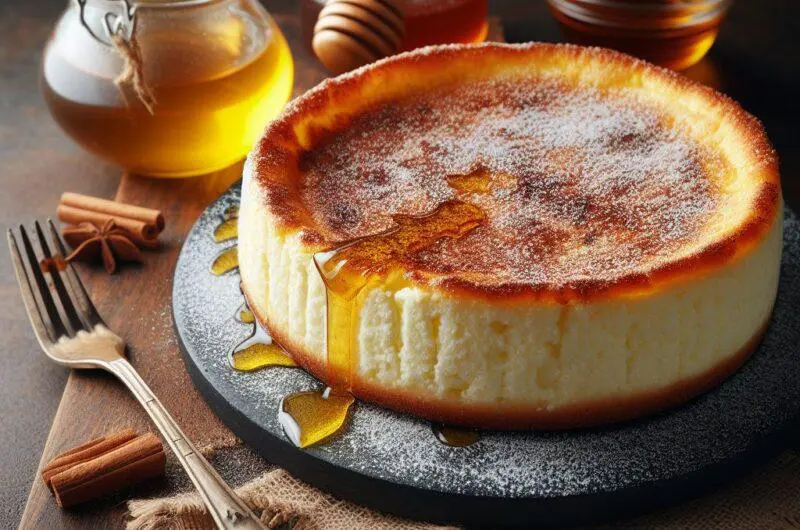The ancient Romans, known for their grand architecture, sophisticated aqueducts, and expansive empire, also had another lesser-known secret: their penchant for delectable desserts. These treats were not just ordinary confections; they were a symphony of flavors, textures, and artistry. Let’s embark on a sweet journey back in time and rediscover the opulent desserts that once graced Roman banquet tables.
The Importance of Desserts in Roman Culture
For the Romans, desserts were more than just an afterthought. They were an integral part of celebrations and religious ceremonies. Honey, the primary sweetener, was considered a gift from the gods and was used generously in various dishes. Many Roman desserts were made to honor the deities during festivals, showcasing the deep-rooted connection between food and spirituality.
Tip: To get an authentic Roman dessert taste, consider using honey as your primary sweetener. Check out a selection of organic honeys here.
Roman Dessert Delicacies
The Romans were innovators in many fields, and dessert-making was no exception. Some popular Roman desserts included:
1. Savillum: A cheesecake-style dessert made with honey, ricotta cheese, and flour, often spiced with a pinch of salt. The cake was baked until golden and then drizzled with more honey before serving.
2. Dulcia Domestica: Translated as ‘homemade sweets,’ these were date-based treats often filled with nuts and seasoned with pepper, then drenched in honey and left to marinate.
3. Libum: A sacrificial cake offered to the gods, made of flour, cheese, and egg. These were sometimes infused with bay leaves for added flavor.
Tip: If you’re a baking enthusiast and wish to recreate these ancient desserts, consider investing in a versatile baking set.
The Opulence of Roman Banquets
Imagine a lavish banquet with guests reclining on couches, musicians playing soft melodies, and tables laden with the finest foods. But it was the dessert course that truly showcased Roman extravagance. Sweets were served on silver platters, with dishes sometimes gilded in gold. Fruits like figs, pears, and grapes were often paired with honey-sweetened wine, creating a harmonious blend of flavors.
Tip: For your next dinner party, why not recreate the magic of Roman banquets? Add a touch of luxury with some elegant silver platters for serving.
The Legacy of Roman Desserts
Roman culinary expertise laid the foundation for many modern European desserts. The techniques and ingredients used by Roman chefs traveled through trade routes, influencing various cultures. For instance, the Roman love for honey and cheese paved the way for cheesecakes in different parts of the world. The use of fruits, nuts, and spices in sweets has also remained a constant through the ages.
Tip: To understand the evolution of desserts, consider exploring a book on the history of desserts. It’s fascinating to see how ancient recipes have transformed over time.
In conclusion, the Romans indeed had the secret to decadent desserts. Their innovative use of available ingredients, combined with their deep cultural and spiritual significance, made their sweets truly exceptional. While we might not recline on couches or offer cakes to deities, we can certainly appreciate and indulge in the rich legacy of Roman desserts. So, the next time you savor a honey-drizzled cheesecake or enjoy wine-soaked fruits, remember the ancient Romans and their sweet secrets.
Savillum: Roman Cheesecake
Course: DessertCuisine: Roman4
servings15
minutes40
minutes350
kcalDive into ancient Roman cuisine with this delicious Savillum recipe, a honey-infused cheesecake that’s both rich and sublime.
Ingredients
1 cup ricotta cheese
1/4 cup honey, plus extra for drizzling
1 large egg
1/2 cup all-purpose flour
A pinch of salt
Directions
- Preheat your oven to 375°F (190°C). Grease a small baking dish or tart pan.
- In a mixing bowl, combine the ricotta cheese, honey, and egg. Whisk until smooth and well-blended.
- Gradually add the flour and a pinch of salt, stirring to incorporate. The mixture should be of a thick, batter-like consistency.
- Pour the batter into the prepared dish, smoothing the surface with a spatula.
- Bake in the preheated oven for about 35-40 minutes, or until the top is golden brown and a toothpick inserted in the center comes out clean.
- Remove from oven and allow to cool slightly. Before serving, drizzle with additional honey for added sweetness.
Notes
- For an added touch, sprinkle with crushed nuts or dried fruit before serving.
- Savillum can be stored in the refrigerator for up to 3 days. Warm slightly before serving for the best flavor.
- Consider pairing with a sweet wine for an authentic Roman experience.
Frequently Asked Questions
Q: What type of honey works best for this recipe?
A: A good-quality raw or organic honey is recommended as it retains the natural flavors and nutrients. However, any type of honey you have on hand will suffice.
Q: Can I use other types of cheese instead of ricotta?
A: While ricotta cheese is traditional for this recipe, you can experiment with other soft cheeses like cottage cheese or mascarpone. Just ensure they’re not too watery.
Q: Is it possible to make this dessert vegan?
A: Yes! Replace the ricotta with a vegan cheese alternative, use a flax egg in place of the regular egg, and ensure you’re using vegan-friendly honey or a sweetener like agave nectar.
Q: How did the ancient Romans serve Savillum?
A: Savillum was often served at feasts and celebrations, drizzled with honey and sometimes garnished with fresh fruits or nuts. It was a dessert fit for nobility and commoners alike.



